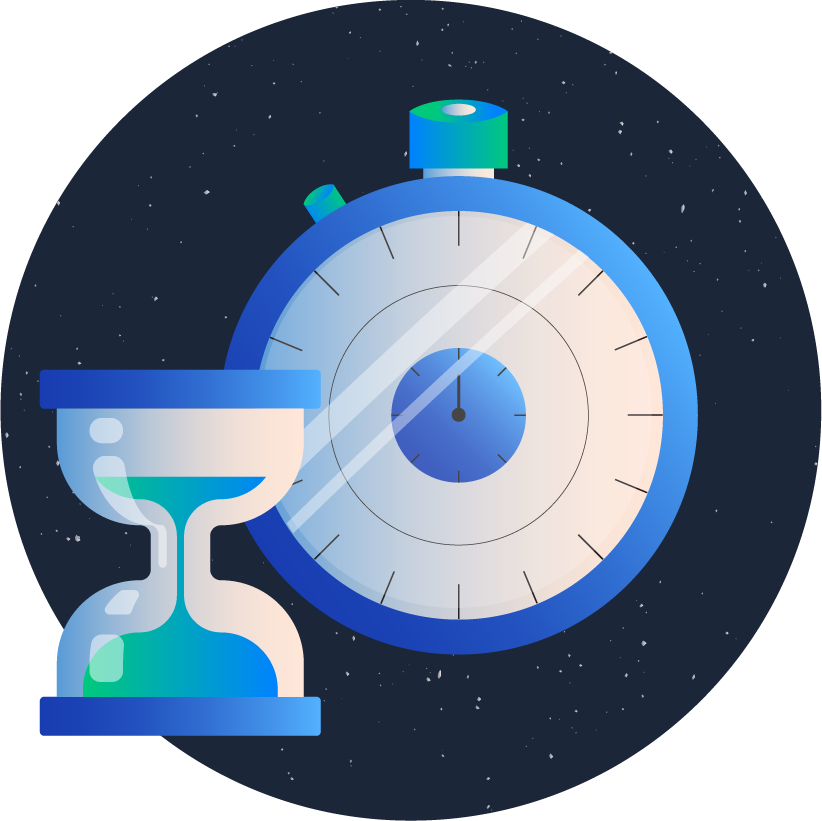A good seller always has their eye on the prize, looking to meet discerning buyers where they are to provide a personalized experience that ends in a satisfying sale.
The quote-to-cash process is undeniably crucial to overall sales operations – if any aspect of the QTC funnel falls short, the integrity of a business’s reputation becomes seriously compromised. Enhancing the overall quote-to-cash process is a goal for most moving into the coming months, and a common denominator is starting to emerge in strategic conversations on the topic.
Configure, price, quote software are crucial to ensuring the success of QTC. CPQ and QTC solutions naturally work together to create cohesive customer service – when properly aligned and integrated with one other, that is.
Working backward, it becomes clear that the right CPQ solution – like the dynamic duo that is Salesforce CPQ and Logik.io, Commerce Logic Engine – directly and substantially improves five specific aspects of QTC.
We surveyed 50+ of our System Integration Partner accounts to find out what’s coming in the world of QTC. Their expert responses are now the foundation of the newest Logik.io publication – The Reality of Modern Quote-to-Cash Operations. Download the Guide here.
Unique Bills of Material
One of the most direct ways to improve upon the quote-to-cash process is by expediting the creation and delivery of bills of material. BOMs communicate the nature of an order to specific audiences, notably buyers and manufacturers.
Sales BOMs are dynamically constructed as a shopper composes their order, and serve as a type of receipt for the transaction. Line items on sales BOMs are typically high-level, serving to confirm the specific goods or services out for fulfillment back to the buyer.
Meanwhile, manufacturing BOMs go into the literal nuts and bolts of a product order, creating a parts list that guides the physical fabrication of a configured item. Manufacturing BOMs can be as inclusive as listing out the type of screws needed to construct a larger piece of furniture, or the specific hex code of a color incorporated into a custom design.
A proper CPQ solution will have the capacity to simultaneously generate sales and manufacturing BOMs, among other formatting options. CPQ system engines can be fed rules that dictate whether a flat or hierarchical BOM is most appropriate for order display, and save time as compared to manual, case-by-case BOM generation that is seen in the absence of CPQ.
Ensuring the most accurate BOMs are delivered to the proper recipients in a timely, automated manner smooths the overall order quote-to-case process for sellers and customers alike.
Intelligent Buyer Engagement (Guided Selling)
More and more, CPQ software solutions are integrating or natively incorporating guided selling paths into their overall architecture. Such interactive buyer engagement leads to near-ideal order optimization, meaning self-directed buyers are submitting their orders with more and more confidence.
Just because traditional sales representatives aren’t immediately offered to consumerized buyers doesn’t mean they miss out on company insight and expertise.
With attribute-based configuration supporting guided selling solutions, and dynamic engine features like Logik.io’s customizable help icons and message types, buyers can educate themselves on product need-to-knows and find themselves in front of curated selections in a matter of moments.
Head to head, do you know which configuration type is best for your business? To learn more about the differences between attribute-based and product-based configurators, download the quintessential Configuration Guide from the free Logik.io Resource Library.
This heightens the overall quality of orders pushed through the quote-to-cash pipeline, in turn reducing the amount of order cancellations, returns, and dissatisfaction rates. Leveraging a proper CPQ offering all but eliminates the chance for user error, and injects hints of representative guidance into the experience.
Dynamic Pricing
Without the ability to dynamically adjust price in accordance with direct user input, a massive wrench gets thrown into the sales pipeline. The quote-to-cash process can’t kick off without a quote itself, and CPQ solutions ensure quick turnaround for even the most complex of configurations.
System integrations within CPQ architecture support dynamic pricing and remove the need for buyer preferences and adjustments to be routed through sales representatives, who have historically been made responsible for manually calculating the price of customized objects and formatting quotes.
Dynamic pricing tools can also include triggers to automatically apply applicable discounts and promotions, or suggest relevant add-ons, bundles, or warranties.
Automated Product Rules and Actions
A tech stack should be making your business operations easier in the long run, not more complicated and costly. Arguably the most obvious way to ease software burdens is by automating as many product rules, actions, triggers, and deployments as physically possible.
With the right CPQ system at your tech stack’s core, there should be quite a few possibilities.
One of the most time-consuming aspects of quote generation is ensuring configuration compatibility. Just because a buyer wants a certain set of specs doesn’t mean those can be translated to the real world.
Automated exclusion and restriction rules like those incorporated in Logik.io’s Solving Engine 2.0 instantly alert shoppers and prevent them from moving forward until compatible choices are substituted.
Without that CPQ support, incompatibilities and other order errors wouldn’t be identified until the point of manufacturing, effectively forcing a mulligan on the order, and putting the buyer back in the middle of the configuration funnel.
Such hiccups have major impacts on the quote-to-cash success ultimately charted, and adds unnecessary stress and frustration to what could, and should, be a mindless process.
Omni-Channel eCommerce
Consumerized buyers accustomed to personalized, B2C-style engagement are driving forces behind omni-channel commerce expansion across business sectors. While omni-channel offerings do unify customer experience and expand the reach and accessibility of a given brand, it does come with factors worth extra consideration.
Namely, the increased complexity that omni-channel eCommerce naturally yields. Logik.io VP of Product, Fazal Gupta, has said that in “an omni-channel scenario, the complexity factor is higher, so thinking about how your administrator experience is going to be done…becomes more critical.”
With so much of omni-channel expansion focus placed on customer experience, it’s easy for administrators and their needs to fall between the cracks.
When it comes to enhanced QTC operations, administrators must be fully supported to work in tandem with a proper CPQ system. A direct, functional pipeline can capture users at the peak point of interest and guide them through a seamless, engaging experience through the channel of their choosing.
Omni-channel offerings also cater to on-the-go shoppers, who may be checking in on their order status or otherwise engaging with the site in different ways at different times. Knowing what users expect in an omni-channel setting means back-end admins can more directly tailor their operational processes to exceed those same expectations.
If you’re working out of a legacy CPQ system that doesn’t have your best interests in mind, now is a better time than ever to make the switch to Logik.io. Our newly debuted Lightspeed Migration Program can translate legacy data into our world-class commerce logic engine and have you up and running in just a matter of weeks. Learn more about life with Logik.io by giving us a test drive a Guided Demo


